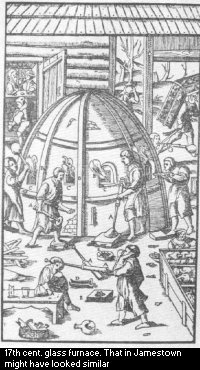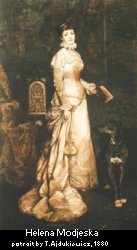
|
Biega Family Page
|
Computer Help
Special characters.
Viruses, Web pages
|
|
Central Europe
Cities, Countries, Info.
New!
|
|
History
Genealogy, History Essays New!
|
Maps
Cities, Countries, Historical
|
Museum AK
Museum of Polish Home Army
|
Photo Gallery
Poland, Warsaw, Cracow, Salzburg, Budapest New
|
Rydzyna
Castle and School
Sulkowski Foundation
Hotel
|
Sailing
all over the world
|
Syrena Press
13 Is My Lucky Number
Story of fighter in Warsaw Uprising in WW II
|

|
|
Contact us by Email
|
|
In 2008 we celebrate the 400th anniversary of the arrival of the first Polish immigrants to the American continent!
They contributed very significantly to the survival of the first English colony at Jamestown. Since then, numerous Poles have fought in the struggle for independence, in the Civil War, and in the defense of the United States in other wars to the present day. Poles have also contributed to the economy and the culture of North America. Below you can read about some of the more outstanding people, some well known, others you probably never heard about.
This essay includes only native born Poles, not those born in America of Polish parents or grandparents, who have their own excellent history.
 Capt. John Smith was fighting in the Austrian Army against the Turks when he was 20 years old. Captured and made a slave, he managed to escape, and spent some time in Poland on his way home to England. He was in the original expedition sent by the London Virgin1a Company in 1606 to set up a colony, and was one of the original 7-man governing council of Jamestown, and Governor 1608-1609. He recognized that trained craftsmen were essential for the survival of the colony and recomended ".... the hiring of the Poles and Dutchmen to make pitch, tar, glass, mills, and soap-ashes....". About October 1, 1608, the Second Supply convoy arrived, under command of Capt. Newport. Capt. John Smith was fighting in the Austrian Army against the Turks when he was 20 years old. Captured and made a slave, he managed to escape, and spent some time in Poland on his way home to England. He was in the original expedition sent by the London Virgin1a Company in 1606 to set up a colony, and was one of the original 7-man governing council of Jamestown, and Governor 1608-1609. He recognized that trained craftsmen were essential for the survival of the colony and recomended ".... the hiring of the Poles and Dutchmen to make pitch, tar, glass, mills, and soap-ashes....". About October 1, 1608, the Second Supply convoy arrived, under command of Capt. Newport.
There were 5 Poles in the ship "Mary Margarett". Only Lowicke was listed by name, the others included among "eight Dutchmen [Germans] and Poles" listed at the end of the manifest. Their names have been established from other sources:
- Michaell Lowicke - or Lowicki, listed as a "Gentleman", believed to be a Polish trader resident in London,
- Zbigniew Stefanski of Wloclawek,
- Jur (also known as Jan) Mata of Cracow,
- Jan Bogdan of Kolomyja,
- Stanislaw Sadowski of Radom.
.
It is believed that the Poles built a glass furnace and worked at making
glass. John Smith recorded that he was saved by two Polandres when he was attacked by Indians, whule walking from the glass furnace back to the fort. Glass making was a well established industry in 17th. century Poland.
More Polish artisans arrived in a supply convoy early in 1619.
In 1619 the colonists were preparing to elect members of the new Virginia assembly. The governor announced that only men of English origin would be allowed to vote. The Poles responded to this announcement by laying down their tools. "No vote, no work" they announced.
This caused consternation and
the court record of the Virginia Company for July 12, 1619, states: "Upon some dispute of the Polonians in Virginia, it was now agreed...they shall be enfranchised and made as free as any inhabitant there whatsoever."
Original references: "The generall historie of Virginia, New England & the Summer Isles, together with The true travels, adventures and observations" by John Smith, published 1624 - Volume 1, Chapter VII. Pages 150 to 184
The struggle for Independence
 Almost everyone knows the two Poles that fought in the American Revolution:
Thaddeus Kosciuszko and
Count Casimir Pulaski. Many streets, schools and buildings have been named for them in towns all across America. Both of them had military experience fighting the Russians in defense of Poland's freedom. They both met Ben Franklin in Paris and came to America to help the American fight for Independence. They both became brigadier generals of the Continental Army.
Almost everyone knows the two Poles that fought in the American Revolution:
Thaddeus Kosciuszko and
Count Casimir Pulaski. Many streets, schools and buildings have been named for them in towns all across America. Both of them had military experience fighting the Russians in defense of Poland's freedom. They both met Ben Franklin in Paris and came to America to help the American fight for Independence. They both became brigadier generals of the Continental Army.
Pulaski was an accomplished cavalry officer and in 1778 he created one of the only cavalry units in the Continental Army, called Pulaski's Legion. In the battle to retake Savannah from the British, he was mortaly wounded and died October 11, 1779, he was 32 years old. In September, 1929, Congress designated October 11 as Pulaski Day to be observed by Presidential Proclamation. However Pulaski Day is celebrated by parades in communities with large populations of Polish descent on March 4, his birthday.
Kosciuszko studied engineering in Paris and was commissioned as Colonel of Engineers by the Continental Congress in October 1776. He built fortifications at many places, the most significant being at Saratoga which enabled the defeat of British troops advancing from the north. He also designed and supervised the building of the fortifications at West Point which successfully repulsed all British attacks.
After the Peace of Paris was signed, Kosciuszko returned to Poland to renew the fight against Russia. He was wounded and taken prisoner. Upon his release he returned to America and was presented with a house in Philadelphia, now a
National Memorial. He died in Switzerland in 1817.
Civil War
The most prominent Pole in the Civil War was
Wladimir Krzyzanowski , known to his army friends as Kriz. A cousin of Frederic Chopin he fled Prussian occupied Poland after the failure of the 1848 revolt against Prussia. He settled in the United States and worked as a surveyor and civil engineer. After the outbreak of the Civil War he organized a volunteer unit from Poles and Germans resident in New York, which became the 58th New York Infantry regiment, known as the "Polish Legion". It participated in the battles of Cross Keys in the Shenandoah Valley, Second Bull Run, Chancellorsville, Gettysburg, and Chattanooga. He was promoted to Brigadier General by president Lincoln in 1865.
After the war he worked in various government admnistrative functions, including early administrative duties in the Alakan territory. He died on January 31, 1887 in New York. 50 years later his remains were transferred to Arlington National Cemetery by order of president Franklin D Roosevelt.
Contributions to American Culture and Economy

Helen Modjeska, the Americanized version of her original name Helena Modrzejewska, was the great Shakespearan actress of the late 19th century. Born Helena Opid in Cracow, Poland, in 1840, at age 21 she married Gustaw Modrzejewski, who started her on her acting career. He died in 1868 and then she married Count Karol Chlapowski. Eight years later they emigrated with her son and several friends to southern California. They established a utopian colony on a ranch that they bought near Anaheim, which failed after a couple of years. She returned to her acting career.
During the 1880 and 1890s Helena Modjeska became renowned world-wide as the best interpreter of Shaakespearian female characters. She performed many other roles, for example she introduced Ibsen's "A Doll House" to the American stage in 1883. She died in Newport Beach, California, in 1909. The house, which she owned for 18 years, on an estate in what is now known as Modjeska Canyon, near Los Angeles, is a registered National Historic Landmark
Ralph Modjeski, one of America's great bridge builders, was born Rudolph Modrzejewski in Bochnia, (near Cracow, Poland) in 1861. He came to the United States with his mother Helen Modjeska (see above) at the age of 15. Although a talented pianist, he decided to become an engineer and graduated from the renowned Ecole des Ponte et Chaussees in Paris in 1885.
In 1893 he established his design and consulting company which still exists today as Modjeski and Masters. Among his great projects are the completion of the rail bridge in Quebec, Canada, which 100 years later is still the world's longest cantilever-truss bridge. He was responsible for the design and construction of the Benjamin Franklin bridge in Philadelphia, which at the time (1926) was the world's longest suspension bridge.
He died in 1940 in Los Angeles.
Dr. Marie Zakrzewska, popularly known as Dr. Zak, was born 1n 1829 in Berlin, Prussia. Her father was a Polish nobleman, her mother was working in Berlin as a midwife. In 1852 Marie was appointed head midwife of a Berlin hospital, but shortly afterwards moved to New York to continue her medical studies, and in spite of opposition she enrolled in the medical school at Cleveland's Western Reserve College. She graduated in 1856. Together with Dr. Elizabeth Blackwell (the first woman to obtain a M.D. degree) and her sister Emily, they opened the New York Infirmary for Women and Children in 1857. In 1862, she opened the second hospital in America to be run by women doctors - the New England Hospital for Women and Children in Boston. This hospital became the primary training hospital for several generations of women physicians. In 1865 she opened the Woman's Medical College of New York together with Emily Blackwell. She died in Boston in 1902
Tadeusz Sendzimir, was the inventor of the process of cold rolling and galvanizing steel called the "Sendzimir process", now adopted world-wide.
Born in 1894 in Lwow (now called Lviv), in the then Austrian occupied Poland, he studied at Lwow Technical University. As a result of the war and the Russian Revolution he ended up in Shanghai, China. There he built a factory producing wire and nails. He designed machinery and experimented with methods of galvanizing steel. Returning to Poland in 1931, he built the first industrial-scale galvanizing unit and put into operation several cold strip mills. In 1936 he built a galvanizing line using his process at the Armco steel mill in Butler, Pennsylvania. In 1938 he formed a partnership with Armco Steel to market his technology world-wide.
In 1939 he moved from Paris to Middletown. Ohio and became a U.S. citizen in 1946. He died in Jupiter, Florida in 1989. His son Michael, born in Singapore, and other members of his family continue to operate T. Sendzimir, Inc, that was established by him in Waterbury, CT, in 1960, to design steel mill equipment and service over 100 patents through licensees all over the world.
Mieczyslaw Bekker, born in Strzyzow, near Horodlo, (now Ukraine), in 1905. He died in Santa Barbara 1989. He was a leading specialist in theory and design of military and off-the-road locomotion vehicles, and an originator of a new engineering discipline called "terramechanics".
He graduated from Warsaw Technical University in 1929. Then he worked in the Army Research Institute in Warsaw. In the Invasion of Poland 1939 he was in a unit that retreated to Rumania and then he was moved to France. In 1942 he accepted the offer of the Canadian government to move to Ottawa to work in armored vehicle research. He entered the Canadian army in 1943 and reached the rank of lt.colonel. Decommissioned in 1956, he moved to the U.S.
In 1961 he joined General Motors to work on the lunar vehicle project. Bekker authored the general idea and contributed significantly to the design and construction of the Lunar Roving Vehicle used by missions Apollo 15, Apollo 16, and Apollo 17 on the Moon. He was the author of several patented inventions in the area of off-the-road vehicles, including those for extraterrestrial use.
He wrote many papers and articles, and the book "Theory of Land Locomotion"
Everyone is familiar with Zbigniew Brzezinski, who appears frequently on television in discussions about U.S. foreign policy.
. Born 28 March 1928, Warsaw, Poland, he was educated in Canada, as his father was Polish Consul-General in Montreal when war broke out in 1939. He obtained his MA degree in 1950 from McGill University in Montreal. He received his Ph.D. from Harvard University in 1953. In 1958 he became a United States citizen. President Carter made Brzezinski his National Security Adviser in 1976.
|
|



 Capt. John Smith was fighting in the Austrian Army against the Turks when he was 20 years old. Captured and made a slave, he managed to escape, and spent some time in Poland on his way home to England. He was in the original expedition sent by the London Virgin1a Company in 1606 to set up a colony, and was one of the original 7-man governing council of Jamestown, and Governor 1608-1609. He recognized that trained craftsmen were essential for the survival of the colony and recomended ".... the hiring of the Poles and Dutchmen to make pitch, tar, glass, mills, and soap-ashes....". About October 1, 1608, the Second Supply convoy arrived, under command of Capt. Newport.
Capt. John Smith was fighting in the Austrian Army against the Turks when he was 20 years old. Captured and made a slave, he managed to escape, and spent some time in Poland on his way home to England. He was in the original expedition sent by the London Virgin1a Company in 1606 to set up a colony, and was one of the original 7-man governing council of Jamestown, and Governor 1608-1609. He recognized that trained craftsmen were essential for the survival of the colony and recomended ".... the hiring of the Poles and Dutchmen to make pitch, tar, glass, mills, and soap-ashes....". About October 1, 1608, the Second Supply convoy arrived, under command of Capt. Newport. Almost everyone knows the two Poles that fought in the American Revolution:
Almost everyone knows the two Poles that fought in the American Revolution:
